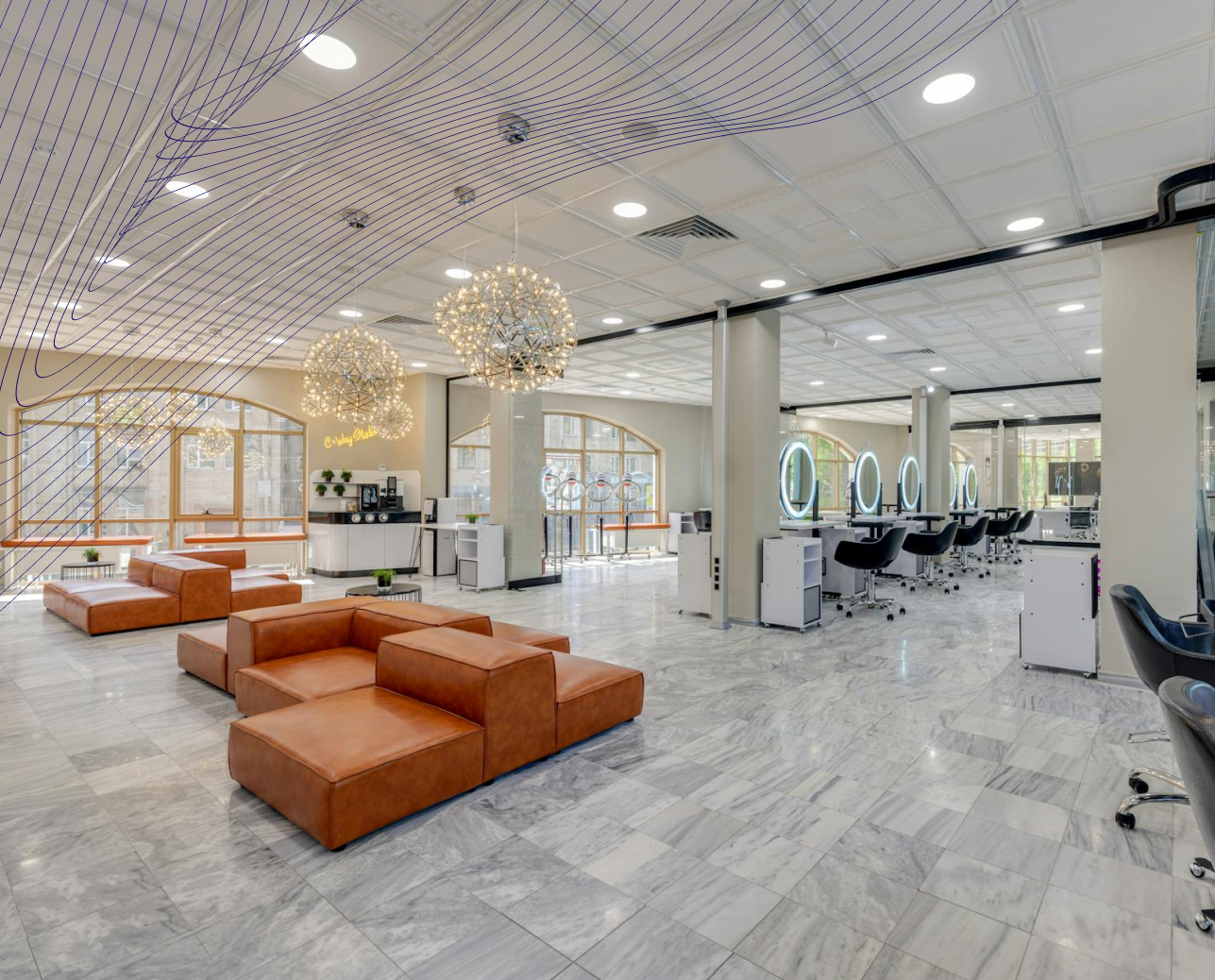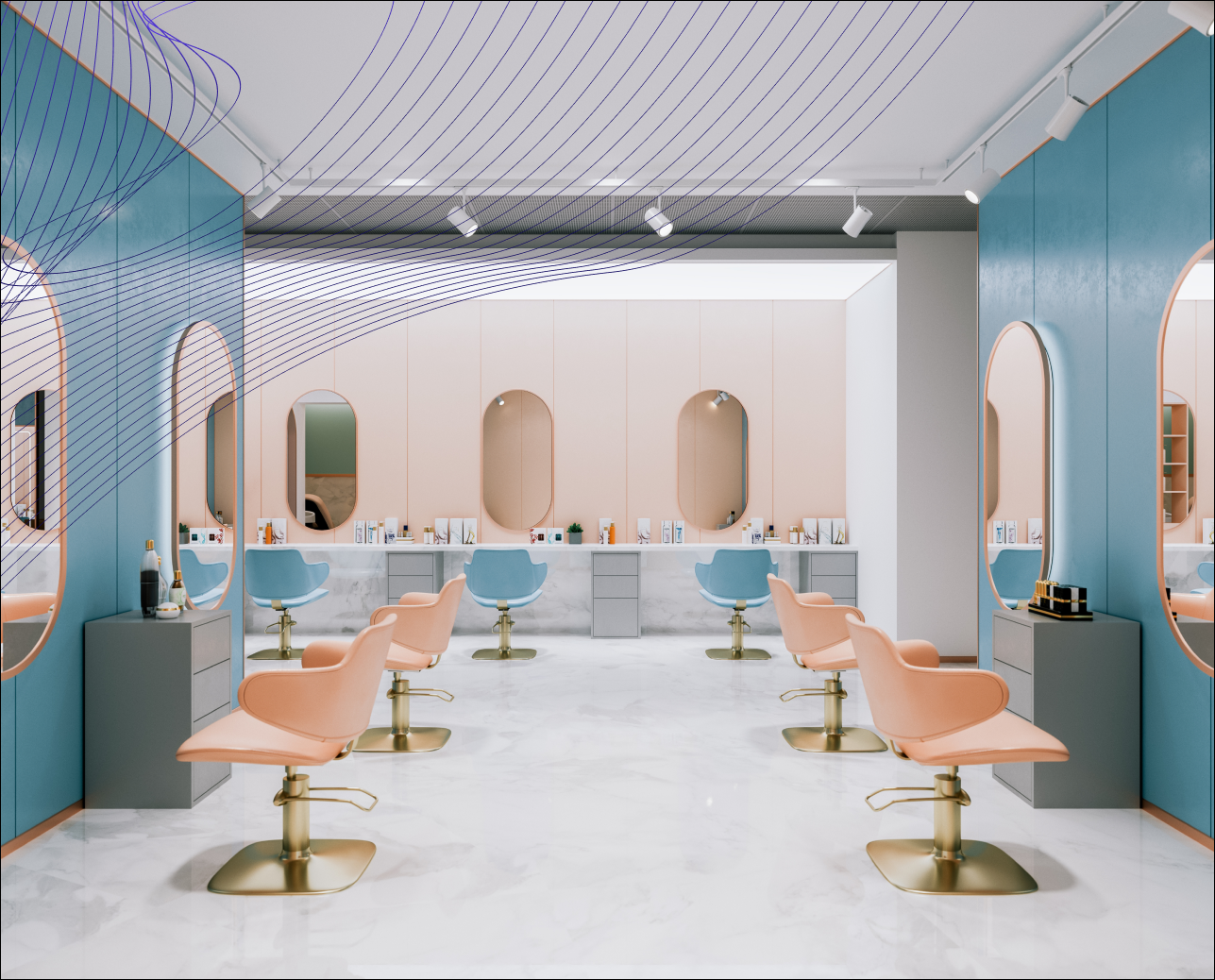How to Open a Hair Salon: A Comprehensive Startup Guide
Starting a hair salon can be an exciting and rewarding venture. This comprehensive guide aims to provide you with information on how to open a hairdressing salon, from understanding the industry to managing your salon operations effectively. Whether you are a seasoned stylist or an entrepreneur looking to enter the beauty industry, this guide will offer valuable insights and practical tips to help you navigate the journey.

Understanding the Hair Salon Business
To open a hair salon, it’s crucial to have a thorough understanding of the hair salon industry. This includes comprehending market dynamics and customer expectations.

Market Research and Analysis
Conducting thorough market research is essential to understand the trends, demands, and opportunities in the hair salon business. Market research provides insights into what clients are looking for in a salon, which services are in high demand, and how to position your business to meet these needs.

Identifying Your Target Market
Determining your ideal clients involves analyzing demographics, preferences, and needs. This helps tailor your services to meet the specific requirements of your target audience, ensuring customer satisfaction and loyalty.
Consider factors such as age, gender, income level, and lifestyle. Surveys, focus groups, and analyzing industry reports can provide valuable data to define your target audience accurately. By understanding these factors, you can better meet the expectations and needs of your potential clients.

Analyzing Your Competition
Evaluating local competitors, their strengths, and weaknesses is vital. Understanding what other salons offer allows you to identify gaps in the market and differentiate your salon by providing unique services or superior customer experiences.
Visit competing salons, review their services, pricing, customer reviews, and observe their marketing strategies. This analysis will help you:
-
Identify market gaps
-
Develop a competitive edge
-
Attract clients who are not fully satisfied with their current salon options
Using this information, you can start a hair salon that stands out and meets the unaddressed needs of your local market.

Choosing the Right Location
Selecting the right location when opening a hairdressing salon involves considering factors such as foot traffic, accessibility, and neighborhood demographics. A prime location can significantly impact your salon's visibility and client base.
High-traffic areas, proximity to complementary businesses, and convenient parking are crucial factors to consider. Additionally, understanding the demographic makeup of the neighborhood can help tailor your services to meet the needs and preferences of the local clientele.
Developing Your Business Plan
A well-structured business plan is a roadmap to hair salon opening success, outlining your salon's strategy, goals, and financial projections. It serves as a blueprint for your business, helping you stay focused and organized as you navigate the complexities of starting and running a salon.

Crafting Your Mission and Vision Statements
Defining your salon's purpose and long-term goals is crucial. A clear mission and vision guide your business strategy and help align your team towards common objectives.
Your mission statement should articulate the core values and services your salon aims to provide, while your vision statement outlines your long-term aspirations and the impact you wish to have in the industry.

Creating a Detailed Budget and Financial Plan
Outlining the cost of opening a hair salon ensures sustainability and profitability. A detailed budget helps you manage your finances effectively and avoid unexpected expenses that could derail your business.

Estimating Startup Costs
Identifying all initial expenses, including lease, equipment, licenses, and marketing, helps you plan your budget effectively and avoid unexpected financial hurdles. Hair salon start-up costs can vary widely depending on the location, size, and scope of your salon.
Common expenses include:
-
Renovation and decor
-
Styling stations
-
Hair products
-
Initial marketing campaigns
Listing these expenses provides a clear picture of what is needed to start your salon and ensures that you are financially prepared.

Projecting Revenue and Expenses
Forecasting your salon's financial performance is essential to ensure profitability and sustainability. This includes estimating monthly revenue, operating costs, and setting realistic financial goals.
Consider factors such as service pricing, client volume, and seasonal trends. By creating detailed financial projections, you can understand the potential profitability of your salon and identify any financial challenges that may arise. These projections will also help you make informed decisions about pricing, services, and marketing strategies.
Securing Financing
Exploring various funding options is crucial to secure the necessary capital for opening a hair salon. Whether you use personal savings, secure a loan, or find investors, having sufficient funds is essential for a smooth launch and early operations.

Personal Savings
Using your own savings as an investment in your opening a hair salon business can provide a solid financial foundation without incurring debt. This option allows you to maintain full control over your business but requires significant personal financial resources.

Small Business Loans
Applying for small business loans involves understanding terms, interest rates, and repayment plans. Loans can provide the necessary capital to cover hair salon startup costs and initial operations.
Research different loan options, such as SBA loans, and prepare a strong business plan to increase your chances of approval.

Investors and Partnerships
Seeking investors or partners can provide capital in exchange for equity or a stake in starting a hair salon business, offering financial support and potential business expertise. Pitching your business to potential investors requires a compelling business plan and a clear vision for growth.
Investors can bring valuable industry knowledge and connections, but it's important to carefully consider the terms of any investment agreements.

Legal and Regulatory Requirements
Understanding and complying with legal requirements is essential to operate and start a hair salon business.

Registering Your Business
Officially registering your business name and entity type is one of the first legal steps to open a hair salon. Choose a business structure that best suits your needs, such as a sole proprietorship, partnership, LLC, or corporation.
Register your business with the appropriate local, state, and federal agencies to obtain necessary tax identification numbers and business licenses.

Obtaining Necessary Licenses and Permits
Various licenses and permits are required to legally operate a hair salon. Ensure you meet all local regulatory requirements to avoid legal issues.
Common licenses include:
-
Business license
-
Salon license
-
Professional cosmetology licenses for your stylists
Research the specific requirements for your location and ensure compliance before opening your doors. This will help you avoid fines, legal issues, and interruptions in your business operations.

Complying with Health and Safety Regulations
One of the requirements to open a hair salon is ensuring your salon meets all local health and safety standards, protects clients and staff, and promotes a safe and professional environment. Regular inspections and adherence to sanitation protocols are essential to maintain a clean and safe salon.
This includes proper sterilization of tools, maintaining a clean workspace, and following guidelines for handling chemicals and hair products. By complying with health and safety regulations, you create a trustworthy environment for your clients and employees, enhancing your salon's reputation.
Setting Up Your Salon
Setting up your salon involves practical aspects such as design, equipment, and technology.

Designing Your Salon Layout
Creating an inviting and efficient salon layout enhances the client experience. Consider the flow of movement, comfortable seating, and aesthetically pleasing decor.
A well-designed layout should maximize space, provide a welcoming atmosphere, and ensure smooth operations. Think about the placement of styling stations, wash areas, and reception desks. A thoughtfully designed layout can significantly improve client satisfaction and staff efficiency, leading to a more successful salon.

Purchasing Equipment and Supplies
A checklist of equipment needed to start a hair salon, including styling chairs, mirrors, and hair products, ensures you are fully equipped to provide professional services.
Invest in high-quality tools and products to ensure the best results for your clients and the longevity of your equipment. Consider the needs of your target market when selecting products and equipment, and stay updated on the latest trends and innovations in the industry.
Essential equipment and supplies include:
-
High-quality styling chairs
-
Professional-grade mirrors
-
Reliable hair dryers and styling tools
-
A variety of hair products suited to different hair types
Having the right equipment and supplies will enable you to offer a wide range of services and meet the diverse needs of your clients.

Implementing a POS System for Hair Salons
A Point of Sale (POS) system can enhance your salon's operations by streamlining transactions, managing inventory, and improving customer service.

Benefits of a POS System
POS streamlines transactions, manages inventory, and improves customer service, making daily operations more efficient. It can help track sales, manage appointments, and provide valuable data on business performance.
Benefits include faster transactions, better inventory management, and enhanced customer experience. Implementing a POS system can lead to more efficient operations and higher client satisfaction.

Features to Look for in a POS System
Look for a system that integrates seamlessly with your other business tools and offers robust reporting capabilities to help you make informed decisions. Essential features include easy appointment scheduling, secure payment processing, and detailed sales and performance reporting.
Choosing a POS system with these features will help you manage your salon more effectively. Consider ME-POS as an option of POS for hair salons.

Integrating POS with Inventory and Client Management
Integrating your POS system with inventory and client management tools enhances operational efficiency and ensures seamless service delivery. This integration helps track product usage, manage client appointments, and store client preferences and history, improving overall customer satisfaction.
Integration benefits include real-time inventory updates, better client service through personalized experiences, and streamlined appointment management. By integrating your POS system, you can optimize your salon's operations and enhance the client experience.
Hiring and Training Staff
Recruiting, training, and retaining skilled professionals is crucial for opening up a hair salon and providing high-quality services.

Recruiting Skilled Professionals
Strategies for attracting and hiring talented stylists and support staff include offering competitive salaries, benefits, and a positive work environment.
Networking within the industry, attending beauty school job fairs, and posting job openings on specialized job boards can help you find the best candidates. Effective recruitment strategies include offering competitive compensation packages, promoting a positive and inclusive work environment, and utilizing industry-specific job boards and networks.
By implementing these strategies, you can attract and hire top talent for your salon.

Providing Ongoing Training and Development
Continuous education and training keep staff updated on the latest trends and techniques, ensuring they provide top-notch services to clients. Regular workshops, training sessions, and industry conferences can help your team stay ahead of the curve and deliver exceptional service.
Benefits of ongoing training include improved staff skills and knowledge, increased client satisfaction, and enhanced salon reputation. Investing in ongoing training and development will help your salon maintain high standards and attract loyal clients.

Creating a Positive Work Environment
Fostering a supportive and motivating workplace culture encourages staff retention and satisfaction, contributing to a harmonious and productive salon environment. Recognize and reward employee achievements, promote open communication, and provide opportunities for career advancement to create a positive and engaging workplace.
Key elements of a positive work environment include recognition and rewards for achievements, open and transparent communication, and opportunities for professional growth. Creating a positive work environment will help you retain skilled professionals and build a strong team.
Marketing and Promoting Your Salon
Effective marketing strategies are essential to attract clients when only starting a hairdressing salon and retain them when you are already in business.

Building Your Brand Identity
Establishing a strong brand identity involves consistent branding and a professional online presence.

Logo and Branding Materials
Designing a memorable logo and cohesive branding materials establishes a strong brand identity and helps your salon stand out. Your branding should reflect the personality and values of your salon, creating a lasting impression on clients.
Important branding materials include:
-
A unique and professional logo
-
Business cards and promotional materials
-
Consistent design elements across all platforms
Developing these branding materials will help you create a recognizable and trustworthy brand.

Online Presence and Website Development
Creating a professional website and utilizing online platforms attracts and engages clients, showcasing your services and building your brand. Your website should be user-friendly, mobile-responsive, and optimized for search engines.
Include features such as online booking, service descriptions, and client testimonials. By developing a strong online presence, you can reach a wider audience and attract more clients to your salon.

Developing Marketing Strategies
Crafting effective marketing strategies reaches and engages your target audience. Leveraging social media platforms promotes your hair salon start-up, showcases your work, and connects with clients. Regularly post engaging content, such as before-and-after photos, styling tips, and client testimonials, to build a loyal online following.
Effective social media strategies include posting consistently and engaging with followers, using high-quality images and videos, and running promotions and contests to attract new clients. Utilizing social media effectively can help you build a strong online presence and attract new clients.
Effective local advertising methods include flyers, local publications, and community events, which help raise awareness and attract local clients. Partner with neighboring businesses, participate in community events, and offer special promotions to increase your salon's visibility in the local area.
Consider the following local advertising methods: distributing flyers in nearby neighborhoods, advertising in local magazines and newspapers, and participating in community fairs and events. These local advertising strategies can help you reach potential clients in your area.
Implementing referral programs encourages existing clients to bring in new customers, enhancing your client base and business growth. Offer incentives, such as discounts or free services, to clients who refer friends and family to your salon.
Key components of a successful referral program include attractive incentives for referrals, easy-to-understand program rules, and regular promotion of the referral program. By implementing a referral program, you can leverage your existing client base to attract new clients.
Managing Your Salon Operations
After you open a hair salon business, running it smoothly on a daily basis involves best practices for managing operations and finances.

Day-to-Day Operations
Managing daily salon operations includes scheduling, client management, and maintaining a clean environment to ensure a smooth and efficient workflow. Develop standard operating procedures (SOPs) for common tasks and train your staff to follow these procedures to maintain consistency and quality.
Important aspects of daily operations include efficient scheduling of appointments, maintaining a clean and organized salon, and ensuring high standards of customer service. By focusing on these daily operations, you can ensure that your salon runs smoothly and efficiently.

Financial Management
Effective financial management practices keep your salon profitable. Keeping accurate financial records, managing expenses, and preparing for tax season are essential to maintain financial health.
Consider hiring a professional accountant or using accounting software to streamline financial management and ensure compliance with tax regulations. Key bookkeeping practices include tracking income and expenses regularly, reconciling bank statements monthly, and preparing for tax filings in advance.
By implementing good bookkeeping practices, you can maintain a clear financial picture and avoid potential issues.
Utilizing a POS system to track sales, generate reports, and analyze business performance provides valuable insights for informed decision-making. Regularly review financial reports to monitor your salon's performance and identify areas for improvement.
The benefits of using a POS system include accurate sales tracking, detailed financial reporting, and improved inventory management. Using a POS system can help you make better financial decisions and improve your salon's profitability.

Client Relationship Management
Building and maintaining strong relationships with your clients is crucial for long-term success. Techniques for fostering strong relationships with clients encourage repeat business and customer loyalty.
Provide personalized services, remember client preferences, and follow up with clients after their appointments to show you care about their satisfaction. Strategies for building a loyal client base include offering personalized services, creating a welcoming and friendly environment, and implementing loyalty programs and rewards. By focusing on client relationships, you can build a loyal and satisfied client base.
Handling client feedback and complaints professionally maintains a positive reputation and helps improve service quality. Implement a system for collecting and responding to feedback, and use it as an opportunity to learn and grow your business.
Effective feedback management includes actively seeking client feedback, responding promptly and professionally to complaints, and using feedback to make improvements. Handling feedback well can help you maintain a positive reputation and continuously improve your services.
Growing Your Business
Expanding and improving your hair salon business over time involves strategic planning and continuous improvement. Exploring new services and treatments to offer clients increases revenue and keeps your offerings fresh and appealing. Stay on top of industry trends and consider adding popular services such as hair extensions, specialized treatments, and wellness services.
Key steps in expanding services include researching industry trends and customer demand, training staff on new services, and marketing new services to existing and potential customers. By constantly expanding your range of services, you can attract new customers and retain existing ones.
Planning to open additional salons involves strategic considerations to ensure successful expansion. Conduct market research to identify potential new locations, develop a scalable business model, and make sure you have the necessary resources to effectively manage multiple locations.
Important factors to consider are market demand in the new regions, financial and operational scalability, and staffing and management of the new regions. Opening new salons can help you grow your brand and expand your market reach.
Regularly evaluating and improving your salon will help you stay competitive and meet customer needs, contributing to long-term success. Solicit feedback from clients and staff, stay up-to-date on industry advancements, and constantly look for ways to improve your services and operations.
Continuous improvement strategies include regularly analyzing customer feedback, staying abreast of industry trends and innovations, and adopting new technologies and best practices. By focusing on continuous improvement, you can ensure your salon's competitiveness and success.

Conclusion
A checklist for opening a hair salon involves a detailed understanding of the industry, careful planning, and strategic execution. Begin by conducting thorough market research to understand your target audience and competition.
Develop a comprehensive business plan that includes clear mission and vision statements, a detailed budget, and financial projections. Secure necessary financing through personal savings, loans, or investors, ensuring you have the capital needed to start your business.
Comply with all legal and regulatory requirements, including registering your business, obtaining necessary licenses, and adhering to health and safety standards. Set up your salon with a well-thought-out layout, high-quality equipment, and an efficient POS system to streamline operations.
Hire and train skilled professionals, providing ongoing development opportunities and creating a positive work environment to retain top talent. Market your salon effectively through strong branding, a professional online presence, and local advertising to attract and retain clients.
Manage daily operations efficiently, focusing on financial management, client relationship management, and continuous improvement. Plan for growth by expanding services and considering additional locations as your business succeeds.
By following these steps and continually seeking ways to improve and adapt, you can start your own hair salon that meets client needs and achieves long-term success.

View more
Related Articles
View more




































